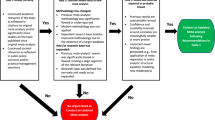Abstract
Military capability is proposed to be defined according to the DYNPOT scoring method. Multiobjective resource allocation of shared resources by group decision-making can combine analytic and qualitative modeling. Recently it has been pointed out that the goal programming model is superior to other models though it remained to be answered how to take into account hierarchy of decision makers (and objectives) (Stummer and Vetschera in Cent Eur J Oper Res 11:3–260, 2003). In this article it is tried to present, that the quantitative model can be easily adapted to the qualitative STT/QFD model of objectives of top-level group of decision-makers. The subsequent phases of the qualitative and the analytic solution of a multiobjective cooperative resource allocation problem can be applied within the group decision-making framework of defence requirements capability-based planning.
Similar content being viewed by others
References
Allen P (1992a) Situational Force Scoring: accounting for combined arms effects in aggregate combat models, RAND-Note. RAND, Santa Monica
Allen P (1992b) A new RSAS (RAND Strategy Assessment System) ground force scoring system (replacing WEI/WUV system), Appendix E. RAND, Santa Monica
Anderson LB, Miercroft FA (1995) On weapons scores and force strengths. In: Bracken J, Kress M, Rosenthal RE(eds) Warfare modeling. MORS John Wiley & Sons, New York, pp 229–249
Charnes A, Cooper WW (1961) Management models and industrial applications of LP, vol 1–2. Wiley, New York, pp 215–223
Dibb P (1992) cited in Norazman BMN (2000) The modelling of defence structure for long-term planning under financial constraint: a complete Army restructuring process for a Third World Country. Ph.D. thesis, RMCS Cranfield
Dupuy TN (1987) Understanding war. Paragon House, Minnesota
Hillestad RJ, Juncosa ML (1995) Cutting some trees to see the forest: on aggregation and disaggregation in combat models. In: Bracken J, Kress M, Rosenthal RE(eds) Warfare modeling. MORS John Wiley & Sons, New York, pp 37–62
Hines J (1990) Calculating war, calculating peace: Soviet military determinants of sufficiency in Europe. In: Huber R(eds) Military stability. Nomos Verlagsgesselshaft, Baden-Baden
Kim KS (2001) Decision support for prioritising defence procurement requirements of three armed services with using managements science methodologies. MDA dissertation, Cranfield University
Lewis L, Roll CR (1993) Strategy-to-tasks: a methodology for resource allocation and management. JUORS, Tokyo; RAND, Santa Monica
Norazman BMN (2000) The modelling of defence structure for long-term planning under financial constraint: a complete Army restructuring process for a Third World Country. Ph.D. thesis, Chapter 7, RMCS Cranfield
Stummer Ch, Vetschera R (2003) Decentralized planning for multiobjective resource allocation and project selection. Cent Eur J Oper Res 11(3): 260
Szalay SP (2001a) The strategy-to-task technique applied to the analysis of British military doctrine, RMCS MSc Dissertation, p 35
Szalay SP (2001b) The strategy-to-task technique applied to the analysis of British military doctrine, RMCS MSc Dissertation, p 27
US Army Concepts Analysis Agency (1979) WEI/WUV III
Vance SM (1993) QFD ‘quicksand’. In: Proceedings of 61st MORSS, p 218
Author information
Authors and Affiliations
Corresponding author
Rights and permissions
About this article
Cite this article
Mezey, G. A practical prioritization by multi-level group decision support. cent.eur.j.oper.res. 16, 1–15 (2008). https://doi.org/10.1007/s10100-007-0040-0
Published:
Issue Date:
DOI: https://doi.org/10.1007/s10100-007-0040-0




